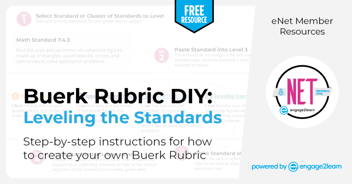Growth Mindset as a leader | engage2learn
Growth mindset isn’t just a skill for learners and educators. It’s a crucial component of effective leadership. It’s possible to be in a position of authority without a growth mindset, but that makes you a boss, not a leader. See how growth mindset affects leadership, and how you can develop a growth mindset.
Growth mindset and leadership
A growth mindset doesn’t mean that you hand out incentives to your team (although that can be a component of a growth mindset), or that you give everyone a participation trophy. Growth mindset is a thought process where a person believes he or she has the ability to constantly grow and learn. Instead of saying, “Things have always been this way,” a person with a growth mindset says, “I can be better.”
Leaders with a fixed mindset may spell trouble in public schools. Education benefits so much from innovation and new ideas. A fixed mindset in leadership inhibits this necessary growth from innovation. Fixed mindset leaders keep students seated in rows, fail to mindfully integrate tech in the classroom, and don’t push educators and learners to succeed. This is a recipe for lower student engagement, decreased achievement, and even decreased teacher retention.
Leaders with a growth mindset benefit other leaders, educators, and learners. While education has challenges, growth mindset leaders meet these challenges with gusto. They use creativity to overcome barriers and make the most of their resources. They not only measure learners’ Life Ready Skills but implement plans to grow these skills over time.
How to develop a growth mindset
Leaders need to have a growth mindset. But can you really change the way your brain works? Absolutely! Check out these tips on developing a growth mindset.
Challenge yourself
When was the last time you felt challenged? Educators face challenges every day, but there’s a difference between facing challenges and challenging yourself. Instead of accepting the status quo, or going with the same-old-same-old, embrace challenges. Do things because they’re hard. It’s often the hard things that will both help you grow as a leader and immensely benefit those you serve.
Choose differently-minded companions
At e2L, we believe that “Great minds think differently.” You’re unlikely to grow if you’re around the same group of people all the time. Break outside of your circle and consult with people you don’t normally work with. Apply this to both your professional and personal life to become more well rounded and open-minded.
Read
We all have one life to live. But when we read, we can live hundreds of lives. While leaders often invest in management tomes and how-to guides, don’t be afraid to branch out. Read fiction or read about topics you normally wouldn’t delve into. You’d be surprised how often a subject like psychology can relate to leadership.
Reiterate your ‘why’
We get stuck in a fixed mindset when we lose sight of why we do our work. When you walk into your office each day, ask yourself, “Why?” Why is my work important? How do my actions affect those around me? Why is my job so critical? Who is counting on me?
Your ‘why’ helps you keep your eye on the prize. It keeps leaders from becoming comfortable and assuming their mission is complete. A growth mindset leader knows his or her mission is never over, and there’s always a new goal on the horizon.
Warm and cool crit
No matter your age, humans are conditioned to see any kind of feedback as ‘bad.’ A growth mindset helps you see the value in constructive feedback. Nobody is perfect, and we all can improve our work. Warm and cool crit protocols help you get better, and a growth mindset helps leaders not see feedback as a personal attack, but a benefit.
The bottom line
Leaders are the cornerstone of every district. While we want teachers and students to develop growth mindsets, this can only happen if leaders also develop a growth mindset. Stretch yourself every day to be better. You’ll be a better person and leader for it.



